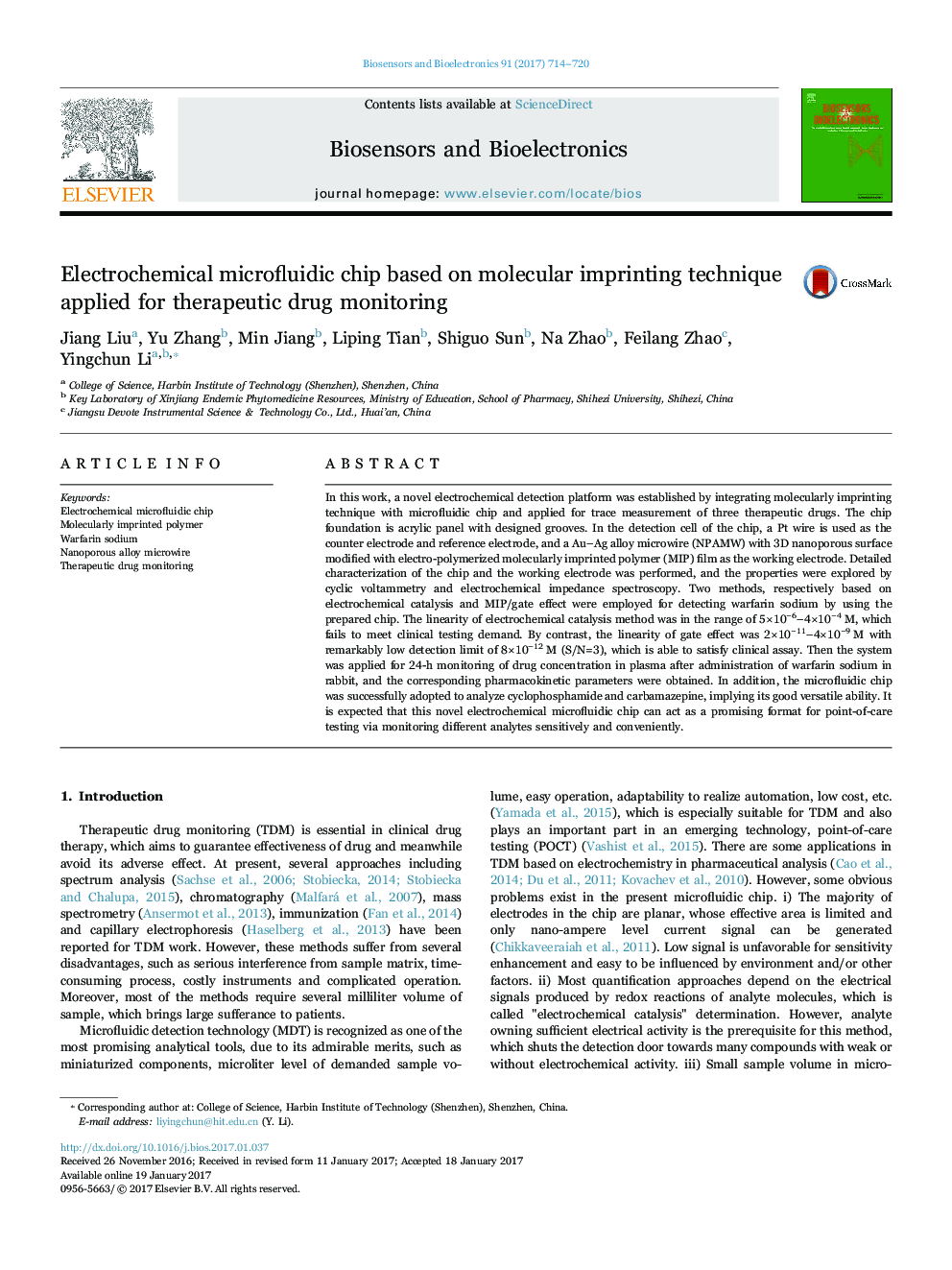| کد مقاله | کد نشریه | سال انتشار | مقاله انگلیسی | نسخه تمام متن |
|---|---|---|---|---|
| 5031211 | 1470941 | 2017 | 7 صفحه PDF | دانلود رایگان |

- A new microfluidic chip was built using nanoporous microrod and MIP for WFS assay.
- Comparison was made between two methods with different measuring principle.
- LOD of MIP/gate effect is lower by six orders of magnitude than that of catalysis.
- Detecting strategy based on MIP/gate effect affords the chip favorable versatility.
- The fabricated chip is a very promising candidate for therapeutic drug monitoring.
In this work, a novel electrochemical detection platform was established by integrating molecularly imprinting technique with microfluidic chip and applied for trace measurement of three therapeutic drugs. The chip foundation is acrylic panel with designed grooves. In the detection cell of the chip, a Pt wire is used as the counter electrode and reference electrode, and a Au-Ag alloy microwire (NPAMW) with 3D nanoporous surface modified with electro-polymerized molecularly imprinted polymer (MIP) film as the working electrode. Detailed characterization of the chip and the working electrode was performed, and the properties were explored by cyclic voltammetry and electrochemical impedance spectroscopy. Two methods, respectively based on electrochemical catalysis and MIP/gate effect were employed for detecting warfarin sodium by using the prepared chip. The linearity of electrochemical catalysis method was in the range of 5Ã10â6-4Ã10â4Â M, which fails to meet clinical testing demand. By contrast, the linearity of gate effect was 2Ã10â11-4Ã10â9Â M with remarkably low detection limit of 8Ã10-12Â M (S/N=3), which is able to satisfy clinical assay. Then the system was applied for 24-h monitoring of drug concentration in plasma after administration of warfarin sodium in rabbit, and the corresponding pharmacokinetic parameters were obtained. In addition, the microfluidic chip was successfully adopted to analyze cyclophosphamide and carbamazepine, implying its good versatile ability. It is expected that this novel electrochemical microfluidic chip can act as a promising format for point-of-care testing via monitoring different analytes sensitively and conveniently.
274
Journal: Biosensors and Bioelectronics - Volume 91, 15 May 2017, Pages 714-720